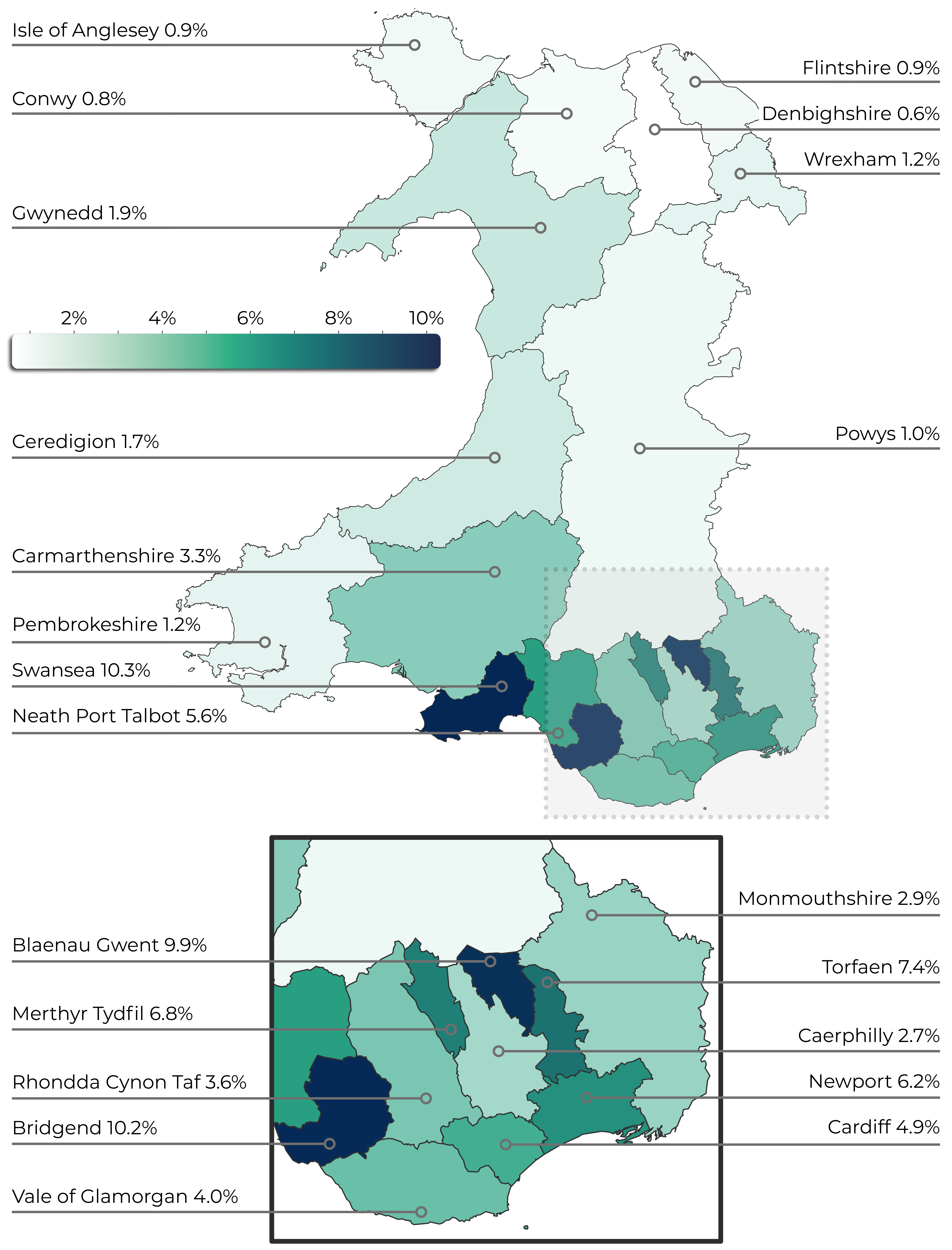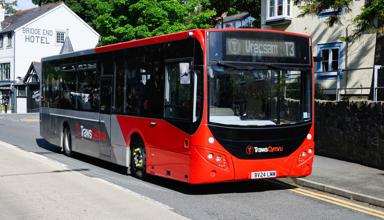On 17 September the statutory speed limit on Welsh restricted roads – those with streetlights no more than 200 yards apart – reduced from 30mph to 20mph.
While 20mph is widely used across the UK, this is the first national scheme.
It’s fair to say the policy has generated a response. The biggest petition (by some way) in Senedd history opposes the change and is still gathering signatures.
This is the first of two articles considering the issues we’re being asked about in Senedd Research. It looks at implementation and evidence on effectiveness. The second will look at monitoring and enforcement.
How did we get here?
The Welsh Government established a 20mph task force in 2019. Its report was published on 15 July 2020 and supported 20mph limits on restricted roads. On the same day, the Senedd debated and agreed a motion that it:
Supports the Welsh Government’s intention to commence consultation on the proposed making of an order by statutory instrument (which will require approval by a resolution of the Senedd) reducing the general speed limit for restricted roads to 20 mph.
Proposals to introduce 20mph were included in Welsh Labour and Plaid Cymru 2021 Senedd election manifestos, and subsequently the new Welsh Government’s Programme for Government.
The Senedd approved legislation in July 2022. The approach was piloted in eight areas.
Local authorities and the Welsh Government, as highway authorities for local and trunk roads respectively, have been working on the policy roll-out. In doing so they are applying Welsh Government guidance to identify which roads should be exempt and remain at 30mph.
Public attitudes have fluctuated. The Welsh Government consulted on the proposals in the summer of 2021, with 47% of respondents supporting the change, and 53% opposed.
The Welsh Government’s public attitudes survey data suggested that in November 2020 80% of the public would “support a speed limit of 20mph in the area in which they lived”. A further survey in September 2022 found 60% were in favour of Welsh Government plans “to reduce the speed limit from 30mph to 20mph in residential communities across Wales”
A poll for ITV Wales, conducted just before the policy roll out, suggested just 31% supported it, with 66% opposed.
However, a separate poll conducted by Redfield & Wilton Strategies on 16-17 September suggested 46% supported the change while 34% opposed.
Is it a blanket policy?
Figure 1: Estimated road length by road speed limit, Wales, September 2023

Source: Welsh Government ad hoc statistical release
Figure 1 shows that the proportion of roads by length that are 40mph or higher remains unchanged.
The profile of other roads has changed. Now 37% of roads by length are 20mph, rising from 2% before the change, while the proportion of 30mph roads has dropped from 37% to 3%.
Is there much variation across Wales?
Yes. Figure 2 shows the proportion of the road network in each local authority with a 30mph speed limit on 4 October 2023 (following the roll out on 17 September).
It includes trunk roads, which the Welsh Government is responsible for, as well as local roads which are the responsibility of local authorities.
Figure 2: proportion of the Welsh road network with 30mph speed limits (4 October 2023)

Source: Welsh Government / DataMapWales. Data is available here to download.
While the Welsh Government and Senedd are responsible for changing the law to introduce the new speed limit, highway authorities remain responsible for deciding speed limits on local roads in their area.
The Welsh Government has suggested that local authorities have interpreted its guidance on exemptions differently. The Deputy Minister for Climate Change, Lee Waters MS, has said:
We’ll be reviewing the guidance but each local authority is going to have to review its own implementation. There are 22 local authorities… They are the local highway authorities. I can’t tell them what to do. I can set the national regulations which we have, we can issue guidance, we can provide funding, but we can’t tell them what to do on their streets.
Therefore the proportion of road length by speed limit is likely to change.
Is 20mph effective in reducing road casualties?
The relationship between speed and crash risk / severity is well established. For example, the International Transport Forum / OECD 2018 research report, Speed and crash risk, concluded:
There have been a number of research efforts undertaken in the last few decades which have all shown a close correlation between speed, road crash frequency and severity: when speed increases, the risk of a crash and of its severity increases as well.
However, the evidence on the efficacy of 20mph speed limits has been mixed. A 2018 UK Government report on the effectiveness of 20mph speed limits found “insufficient evidence” that 20mph limits in residential areas made a “significant change” in collisions and accidents.
In contrast, a 2018 review of evidence commissioned by the Welsh Government found “moderate to strong” evidence that 20mph reduces casualties.
Part of the challenge arises from differing implementation approaches. Speed limited areas vary in size, and there’s a distinction between self-enforcing 20mph limits (without traffic calming), and traffic calmed 20mph “zones”.
Literature often highlights a need for further research and long-term assessment of road safety outcomes.
The example of Belfast, referenced in the record-breaking petition, illustrates this point.
Belfast saw 76 city centre streets move to 20mph in 2016. A follow up review of the scheme, published in November 2022, found “little effect for reduction in road traffic collisions, casualties and speed when a 20 mph speed limit intervention is implemented in a city centre”.
However, rather than finding 20mph limits ineffective, the review said:
The intervention was implemented at the city centre scale (only 76 streets) in comparison to the recent city-wide intervention in Edinburgh which showed significant reductions in road traffic speed, collisions and casualties. Large scale implementation of 20 mph speed limit interventions may be an important factor for effectiveness (scale).
A 2021 evaluation of Edinburgh’s city-wide scheme concluded it, “Was associated with meaningful reductions in traffic speeds”. A three year post implementation review reported a 30% decrease in collisions and a 31% decrease in casualties.
Transport for London has found similar results for its wide-area scheme, with collisions falling 25% over two years to June 2022, and those resulting in death or serious injury down 24%.
The impact of the pandemic on both of these studies is unclear.
Why are people talking about Spain?
Spain introduced a 30kmh (around 19mph) limit on most urban roads in May 2021.
While the change in Spain was not the driving force for the Welsh policy, a Welsh Government media release on 11 September 2023 said:
Since then, Spain has reported 20% fewer urban road deaths, with fatalities reduced by 34 per cent for cyclists and 24 per cent for pedestrians.
The Welsh Government didn’t include dates, but the figures reflect data presented in a September 2022 Spanish Government press release comparing 2021 road accident data with that in 2019.
Others have questioned this. For example, media sources suggested total road deaths in Spain increased between 2019 and 2022.
Preliminary Spanish road accident data for 2022 is reproduced in figures 3 and 4.
Figure 3: Number of road accident victims on all Spanish road types (2013-2022)
Figure 4: Number of road accident victims on Spanish roads by road type (2013-2022)
Note: data for Catalonia is provisional.
Source: Spanish National Road Safety Observatory
Overall, numbers killed and injured on all Spanish roads declined between 2019, the last full pre-pandemic year, and 2022.
Urban roads, where the 30kmh limit change took effect, saw deaths and minor injuries fall but hospitalisations increase between 2019 and 2022.
Bigger interurban roads, not affected by the change, saw fatalities increase, but there were reductions in the other accident severity categories.
While the Spanish and Welsh Governments are correct in noting reductions in fatalities on urban roads between 2019 and 2021, figures 3 and 4 suggest the pandemic had an effect.
It looks like more data will be needed to fully understand the impact of the change in Spain.
You can also read our second article looks at enforcement and monitoring.
Article by Senedd Research, Welsh Parliament









